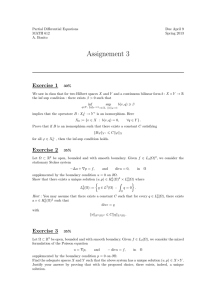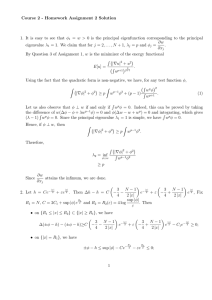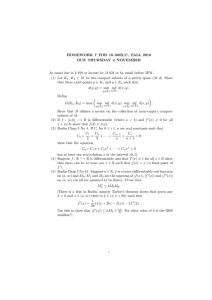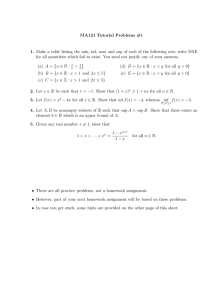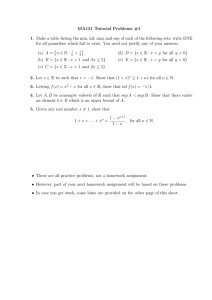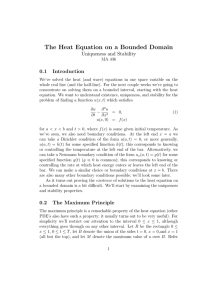Homework 4 Exercise 1
advertisement
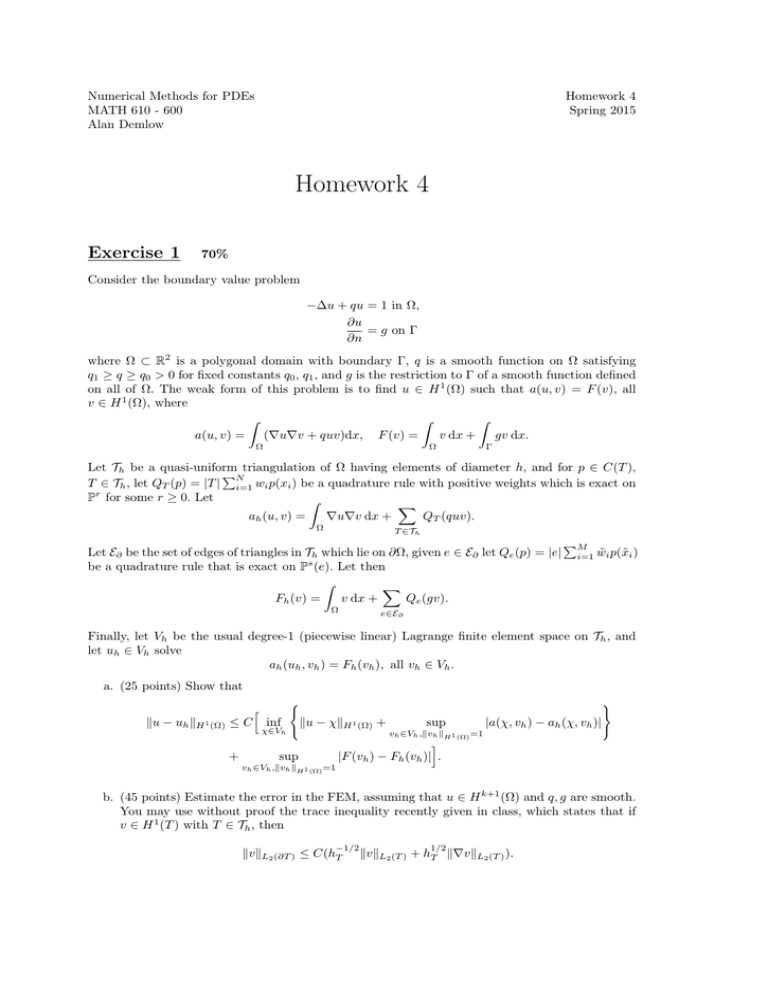
Numerical Methods for PDEs MATH 610 - 600 Alan Demlow Homework 4 Spring 2015 Homework 4 Exercise 1 70% Consider the boundary value problem −∆u + qu = 1 in Ω, ∂u = g on Γ ∂n where Ω ⊂ R2 is a polygonal domain with boundary Γ, q is a smooth function on Ω satisfying q1 ≥ q ≥ q0 > 0 for fixed constants q0 , q1 , and g is the restriction to Γ of a smooth function defined on all of Ω. The weak form of this problem is to find u ∈ H 1 (Ω) such that a(u, v) = F (v), all v ∈ H 1 (Ω), where Z Z Z a(u, v) = (∇u∇v + quv)dx, F (v) = v dx + gv dx. Ω Ω Γ Let Th be a quasi-uniform triangulation of Ω having elements of diameter h, and for p ∈ C(T ), PN T ∈ Th , let QT (p) = |T | i=1 wi p(xi ) be a quadrature rule with positive weights which is exact on Pr for some r ≥ 0. Let Z X ah (u, v) = ∇u∇v dx + QT (quv). Ω T ∈Th Let E∂ be the set of edges of triangles in Th which lie on ∂Ω, given e ∈ E∂ let Qe (p) = |e| be a quadrature rule that is exact on Ps (e). Let then Z X Fh (v) = v dx + Qe (gv). Ω PM i=1 w̃i p(x̃i ) e∈E∂ Finally, let Vh be the usual degree-1 (piecewise linear) Lagrange finite element space on Th , and let uh ∈ Vh solve ah (uh , vh ) = Fh (vh ), all vh ∈ Vh . a. (25 points) Show that ku − uh kH 1 (Ω) ≤ C + h ( inf χ∈Vh ) ku − χkH 1 (Ω) + sup |a(χ, vh ) − ah (χ, vh )| vh ∈Vh ,kvh kH 1 (Ω) =1 i |F (vh ) − Fh (vh )| . sup vh ∈Vh ,kvh kH 1 (Ω) =1 b. (45 points) Estimate the error in the FEM, assuming that u ∈ H k+1 (Ω) and q, g are smooth. You may use without proof the trace inequality recently given in class, which states that if v ∈ H 1 (T ) with T ∈ Th , then −1/2 kvkL2 (∂T ) ≤ C(hT 1/2 kvkL2 (T ) + hT k∇vkL2 (T ) ). Exercise 2 30% Consider the boundary value problem −∆u = f in Ω, u = 0 on ∂Ω. R R Let a(u, v) = Ω ∇u∇v dx and F (v) = Ω f v dx. Let uh ∈ Vh be a finite element approximation given by ah (uh , vh ) = Fh (vh ), all vh ∈ Vh . Also, given g ∈ L2 (Ω), let zg ∈ H01 (Ω) solve −∆z = g. Prove that n 1 inf Cku − uh kH 1 (Ω) kzg − zh kH 1 (Ω) ku − uh kL2 (Ω) ≤ sup g∈L2 (Ω) kgkL2 (Ω) zh ∈Vh o + |a(uh , zh ) − ah (uh , zh )| + |f (zh ) − fh (zh )| .

